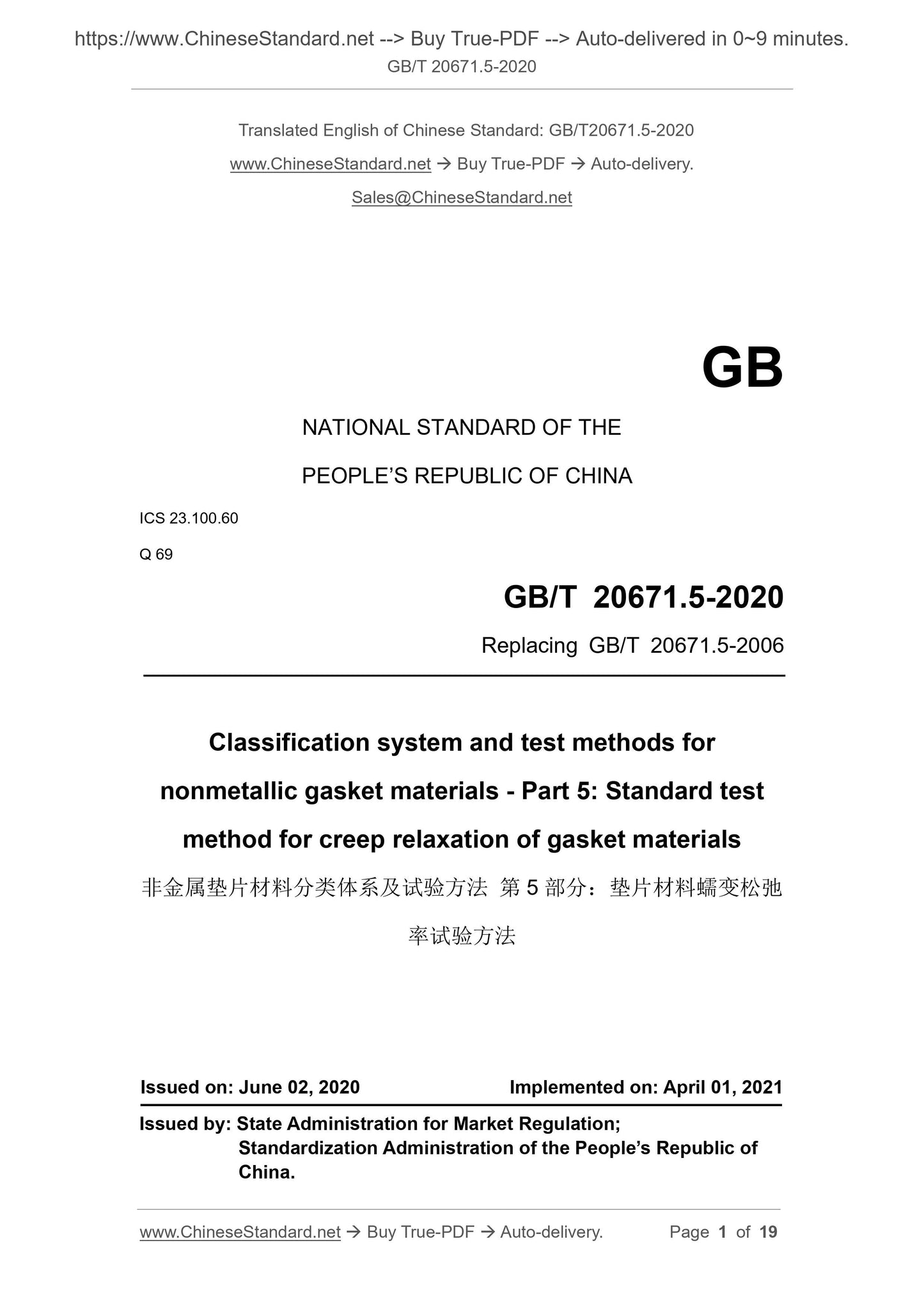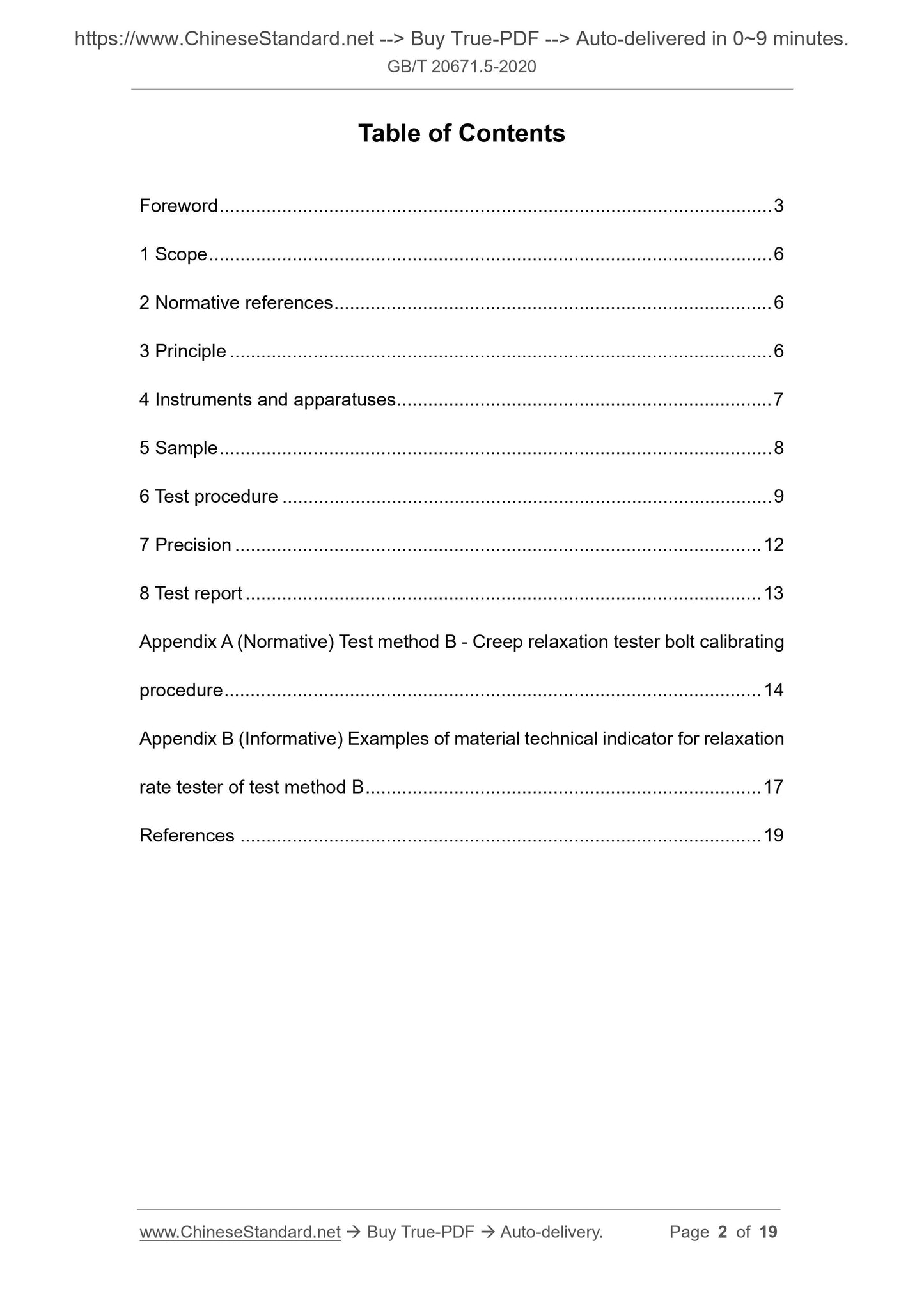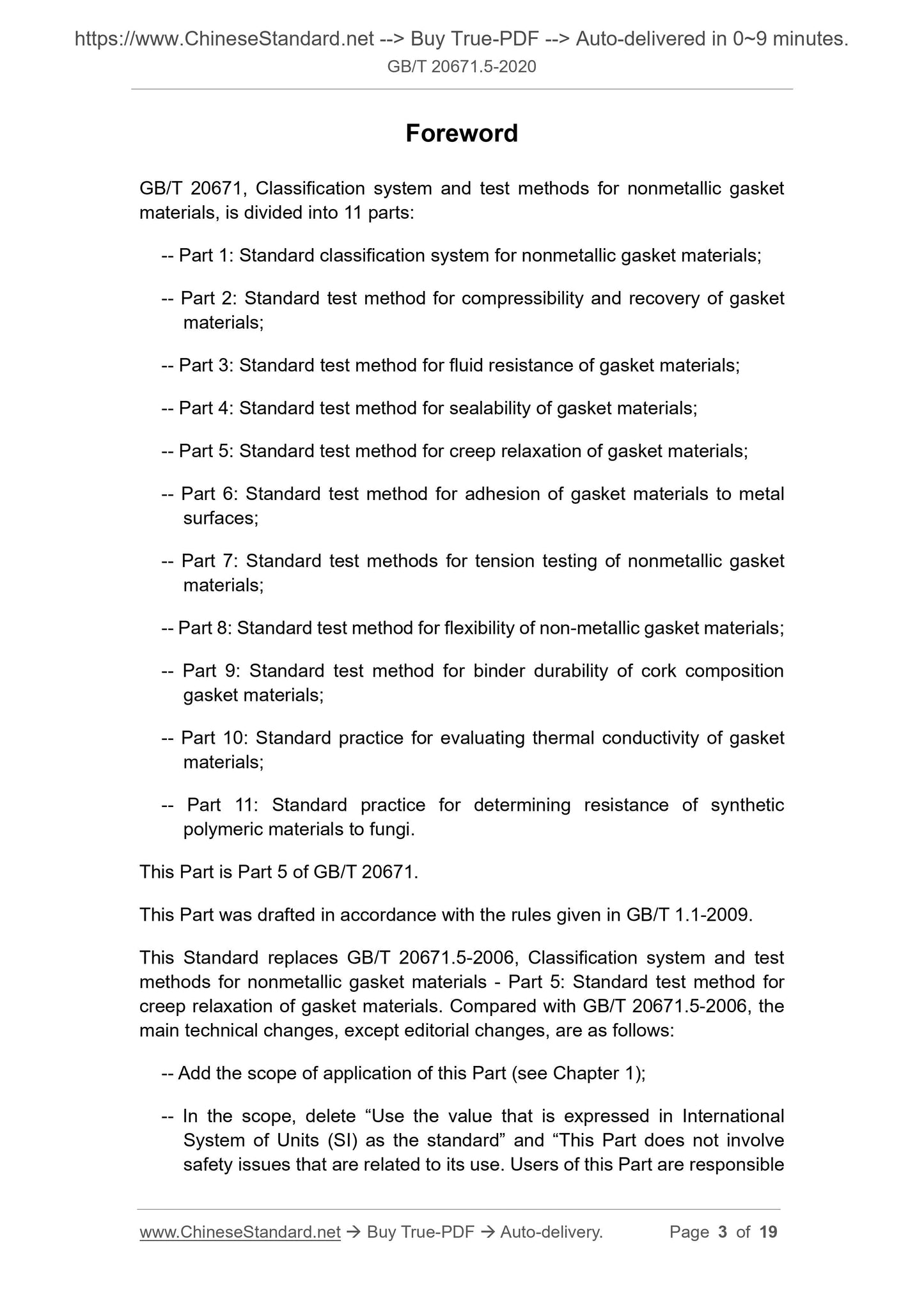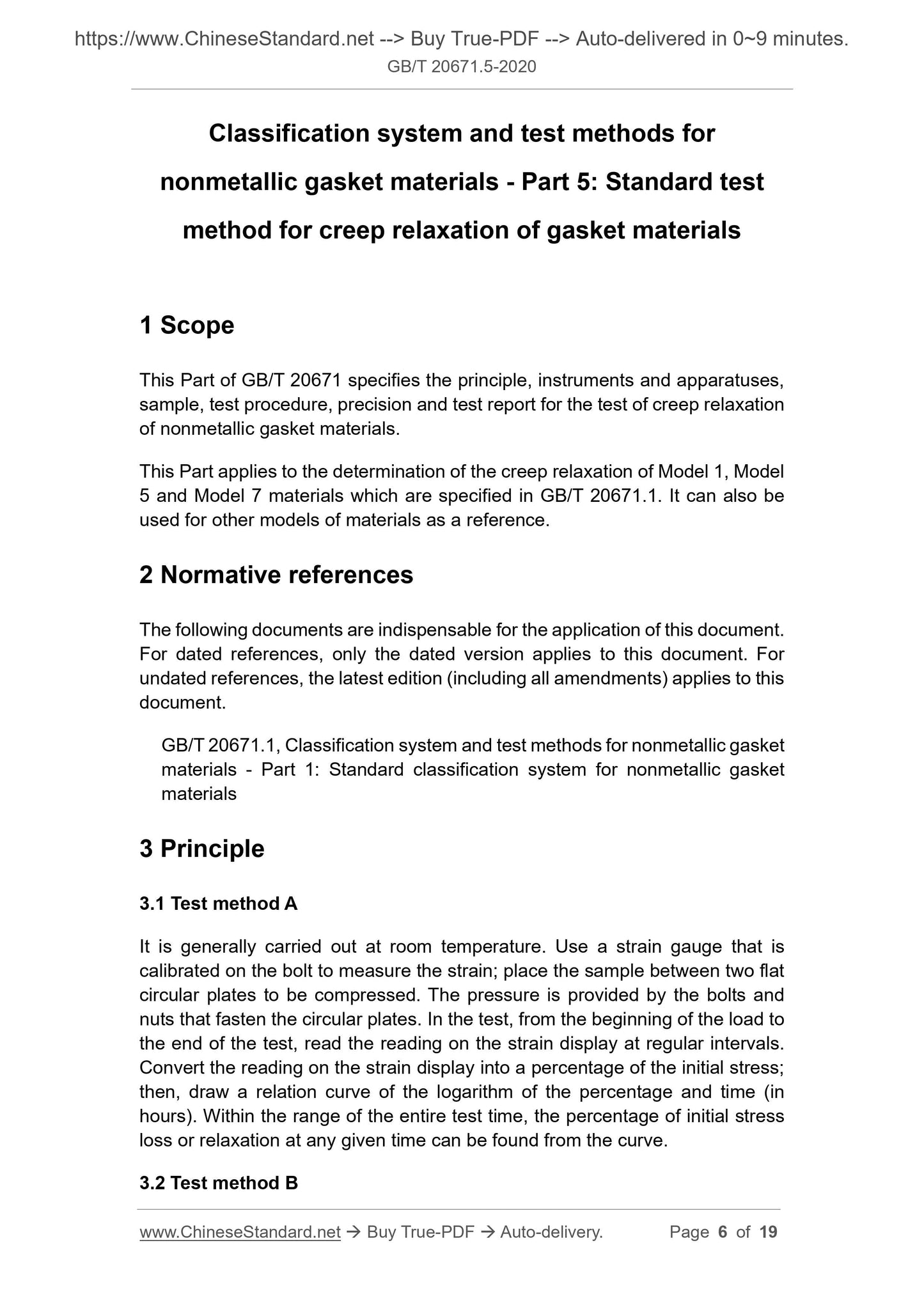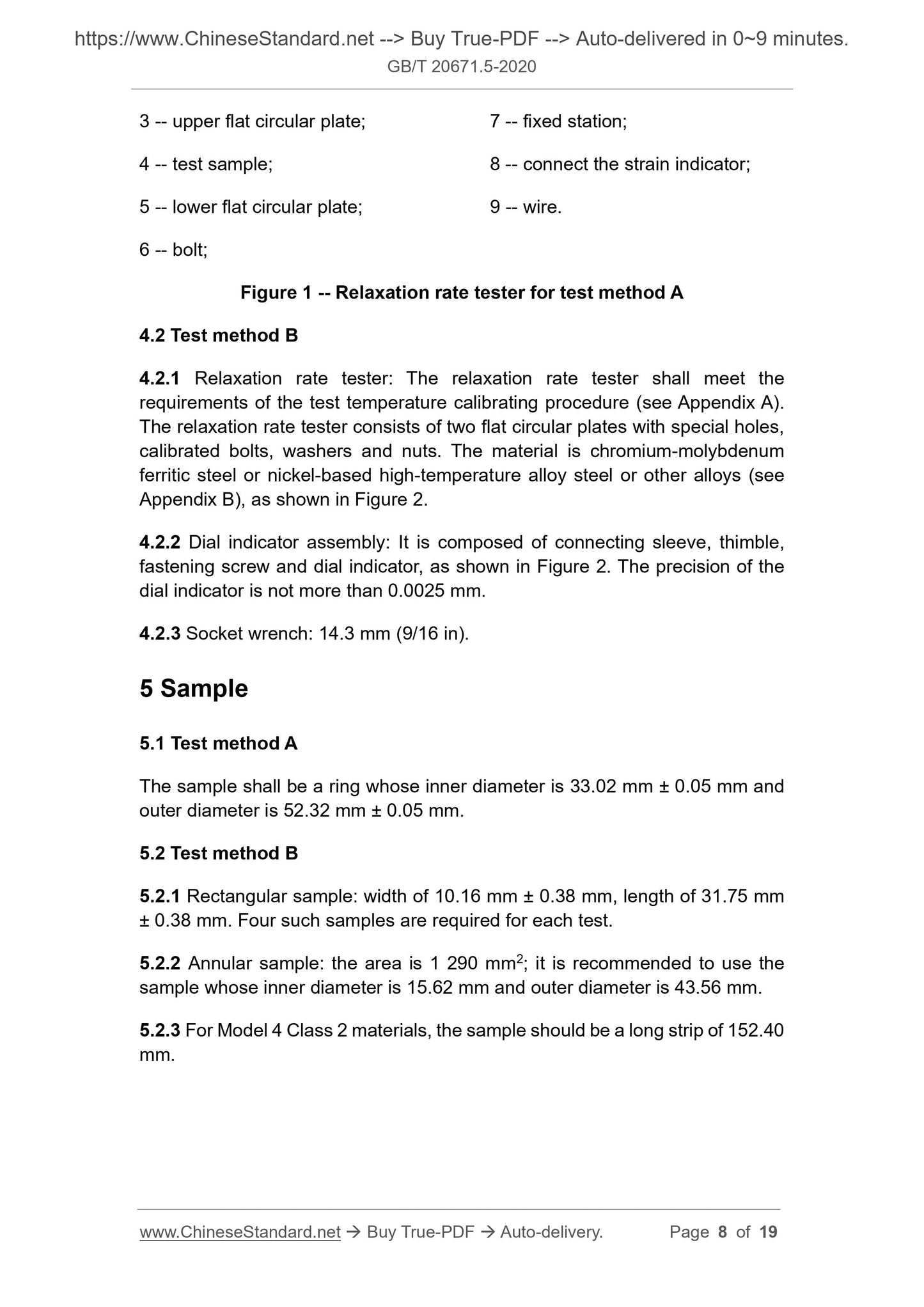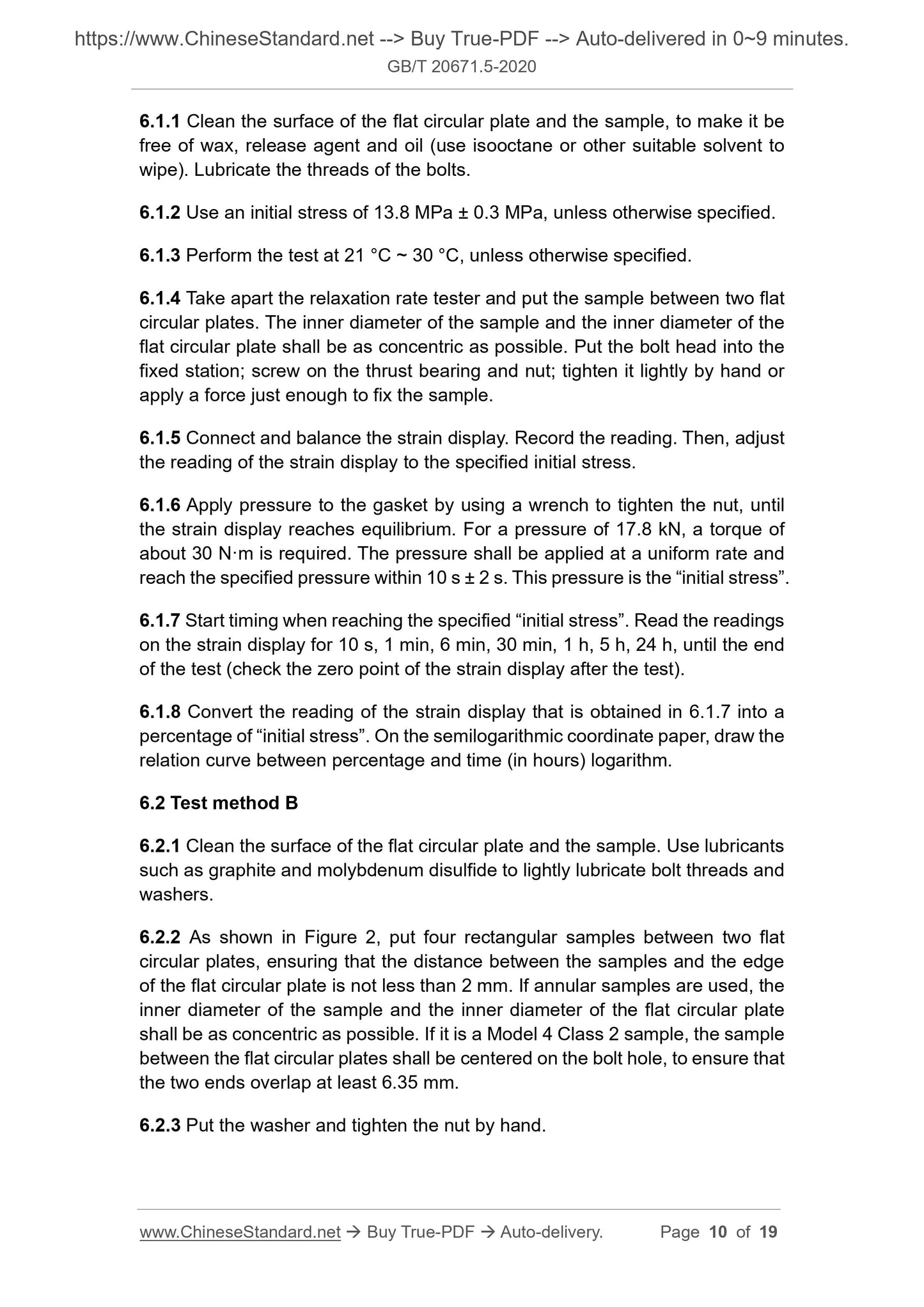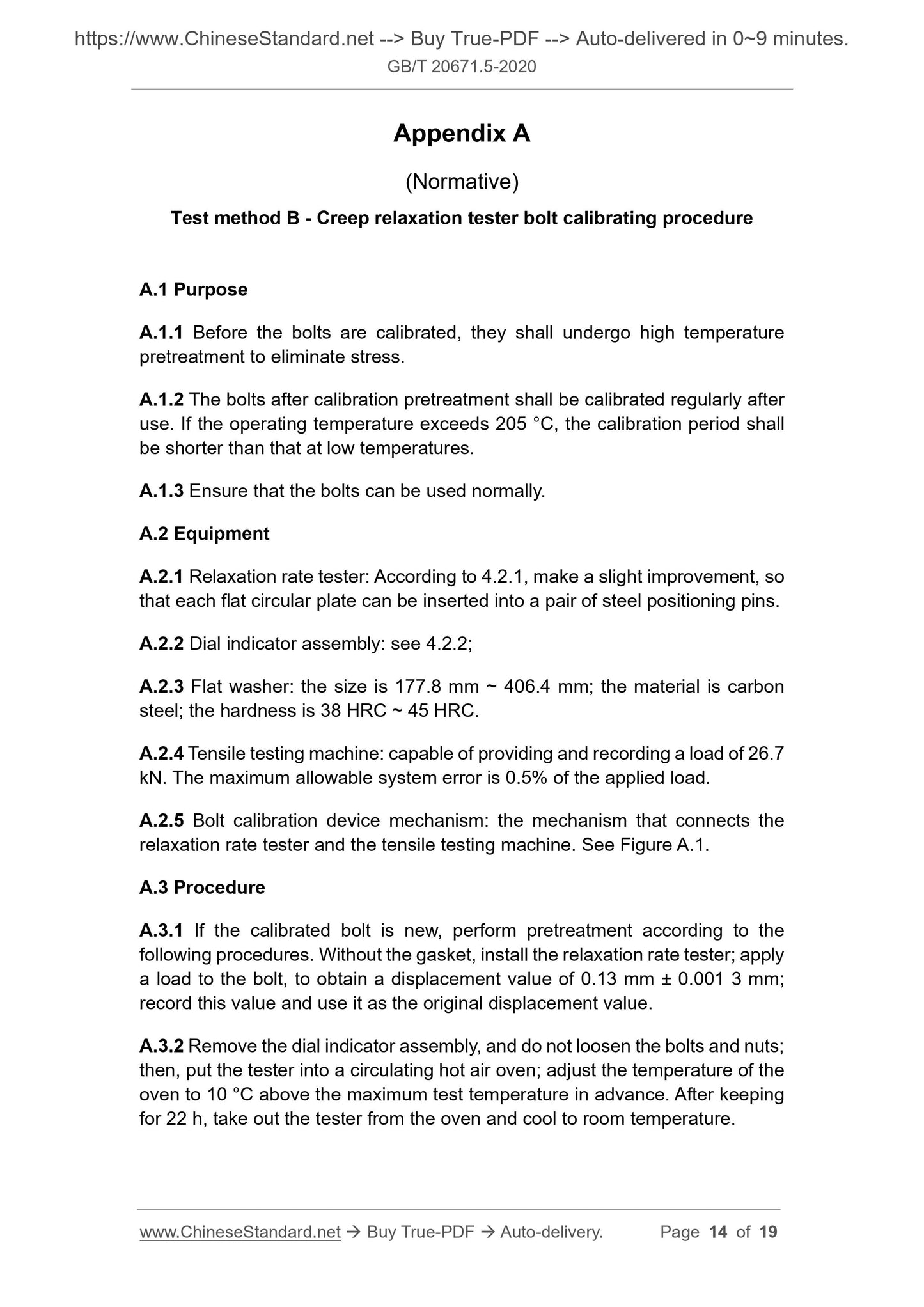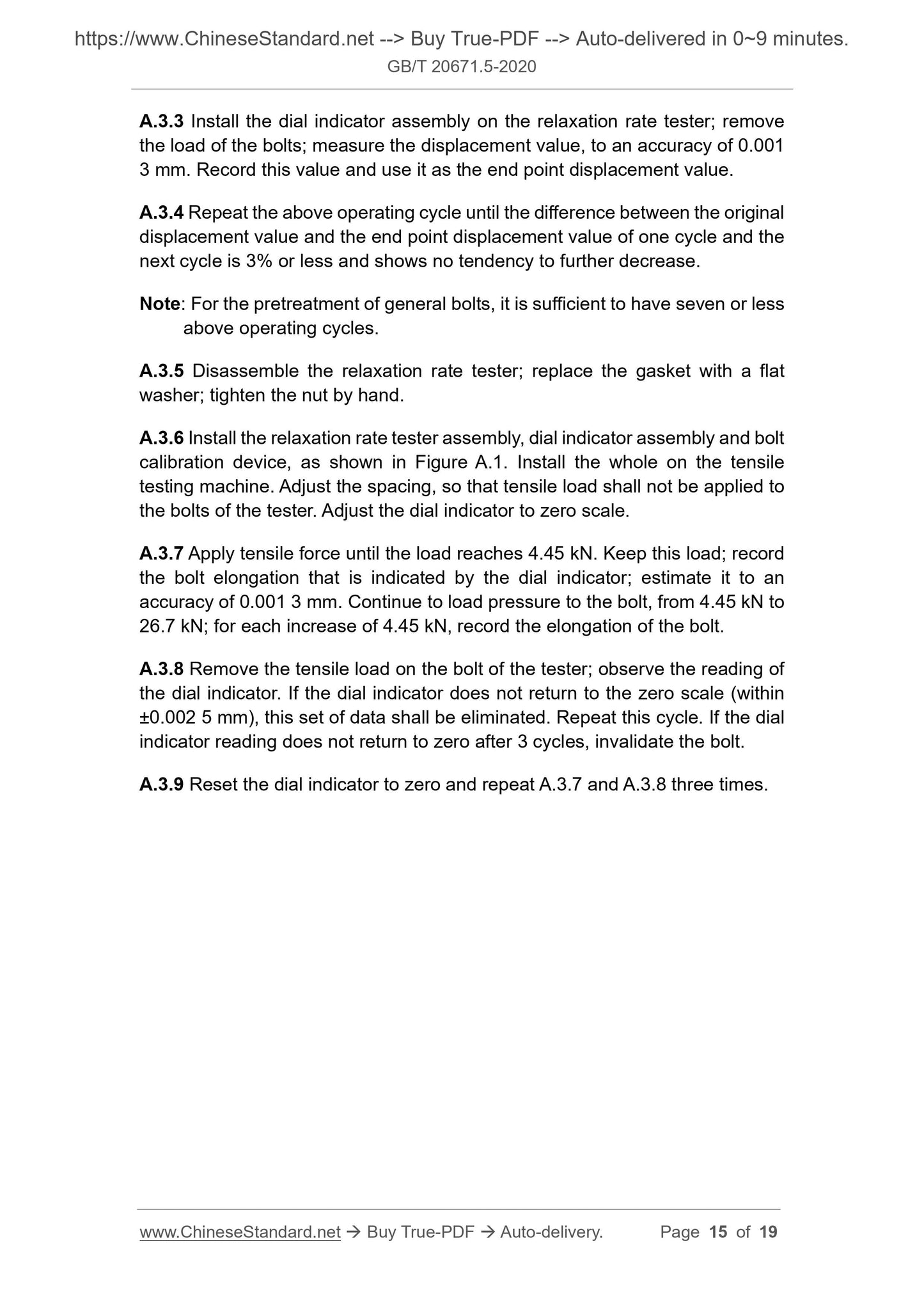1
/
of
8
www.ChineseStandard.us -- Field Test Asia Pte. Ltd.
GB/T 20671.5-2020 English PDF (GB/T20671.5-2020)
GB/T 20671.5-2020 English PDF (GB/T20671.5-2020)
Regular price
$185.00
Regular price
Sale price
$185.00
Unit price
/
per
Shipping calculated at checkout.
Couldn't load pickup availability
GB/T 20671.5-2020: Classification system and test methods for nonmetallic gasket materials - Part 5: Standard test method for creep relaxation of gasket materials
Delivery: 9 seconds. Download (and Email) true-PDF + Invoice.Get Quotation: Click GB/T 20671.5-2020 (Self-service in 1-minute)
Newer / historical versions: GB/T 20671.5-2020
Preview True-PDF
Scope
This Part of GB/T 20671 specifies the principle, instruments and apparatuses,sample, test procedure, precision and test report for the test of creep relaxation
of nonmetallic gasket materials.
This Part applies to the determination of the creep relaxation of Model 1, Model
5 and Model 7 materials which are specified in GB/T 20671.1. It can also be
used for other models of materials as a reference.
Basic Data
| Standard ID | GB/T 20671.5-2020 (GB/T20671.5-2020) |
| Description (Translated English) | Classification system and test methods for nonmetallic gasket materials - Part 5: Standard test method for creep relaxation of gasket materials |
| Sector / Industry | National Standard (Recommended) |
| Classification of Chinese Standard | Q69 |
| Classification of International Standard | 23.100.60 |
| Word Count Estimation | 14,197 |
| Date of Issue | 2020-06-02 |
| Date of Implementation | 2021-04-01 |
| Older Standard (superseded by this standard) | GB/T 20671.5-2006 |
| Quoted Standard | GB/T 20671.1 |
| Issuing agency(ies) | State Administration for Market Regulation, China National Standardization Administration |
| Summary | This standard specifies the principles, equipment, samples, test procedures, precision and test reports for the determination of creep relaxation rate of non-metallic gasket materials. This standard applies to the determination of creep relaxation rate of type 1, type 5 and type 7 materials specified in GB/T 20671.1. Other types of materials can also be used for reference. |
Share
